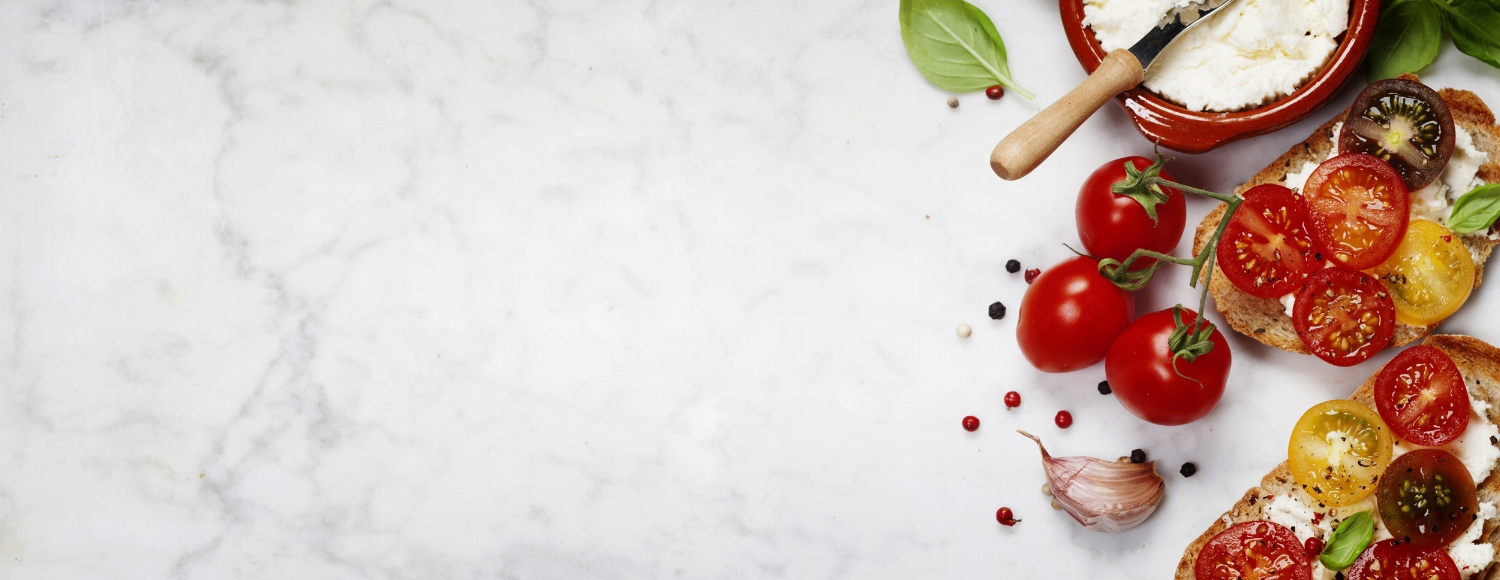Using Marble Countertops in the Kitchen
If you're reading this article, it's likely that you are going through the same dilemma that many of my clients experience. You probably love the look of beautiful white marble countertops that you've seen in every other kitchen photograph, but you're not convinced that they suit your lifestyle. I will also proceed to guess that you, at some point, told yourself that you were going to choose a more practical countertop material. However, when you went to a slab yard to take a look, everything that made your heart do little leaps of joy turned out to be marble. So now you've begun this debate with yourself (or perhaps your spouse) about whether or not you should take the plunge.
As a kitchen designer for eighteen years, I witness this scenario play out for almost every client. While about 20% of them will ultimately choose granite, a large portion will cross over to the marble-lover camp. The visit to the slab yard is usually responsible for the transformation. It's interesting how something as cold and hard as marble can make our hearts go pitter-patter. I liken it to art...when you see the right piece it can just knock you off your feet. My clients will see a particular slab and that's it - the whole vision of their future kitchen comes together for them. Once bitten, my clients will inevitably agonize over the choice between marble countertops and a more practical solution for weeks. In an effort to spare you the anxiety you might be experiencing with your kitchen, please allow me to share some of my insights as a kitchen designer for the last 18 years.
Five things you should know about using marble in the kitchen:
1. Marble doesn’t stain very often – it etches.
This statement assumes that you are a reasonable person and would apply an impregnating sealer to your marble upon installation, per your fabricator’s recommendations. The sealers on the market today impregnate the stone and provide good resistance to staining. It does not make your marble stain-proof, but it gives you a reasonable amount of time to wipe-up any spills that would otherwise prove problematic. So, in other words, if you were to spill a little red wine and wipe it up in thirty minutes, you would be fine. If you left it there all night, you might have a stain. Etching, however, is an entirely other affair. Marble is composed mostly of calcium carbonate, which reacts to acidic substances. So you need to educate yourself a little about what kitchen foods or chemicals might prove to be a problem. For instance, vinegar, tomato sauce, orange juice are common culprits. As are certain cleaning products. However, you need to go a step further and be aware of things like the vinegar in your salad dressing or the lime juice in your guacamole dip. All of these things could easily etch your marble if left to sit for a while.
2. Marble is a Lifestyle Choice.
You will eventually have etch markings on your marble, you should come to terms with that before you purchase. You will want to give your marble some tender loving care, but in the end, your life will be etched into your marble, like it or not. However, that’s not such a bad thing. The first mark will likely really bother you. You probably won’t notice much after that. Once you get a handful of etch markings, believe it or not - it just looks normal. One big etching on an otherwise pristine piece of polished marble will definitely stand out, but once it is one of many, it just looks like character. I look at my countertops now and I can see the history of my kitchen and my family plainly written on my marble...and I've grown to appreciate that.
3. Honed marble will not show etch marks as badly as polished marble.
However, polished marble will have slightly more stain resistance than a honed finish. Regardless, make sure that you apply your sealer per the recommendations of your fabricator.
4. Marble kitchen countertops can be re-honed periodically.
If you are really fastidious, you can have your countertops re-honed to remove most of the etch marks from time to time.
5. Scratching can happen but is not particularly problematic.
While marble is somewhat more susceptible to scratching than granite, I don’t consider this to be a significant factor. If you used your good knives on marble or granite, they will be dull very quickly, so you're not going to cut on it very often. I cut an occasional sandwich or piece of fruit on my marble and I’ve never had a problem (although I am careful as I do it). A knife with a fine, serrated edge is more likely to leave a score mark than a chef’s knife.
If you’re still a little hesitant to embrace marble throughout your kitchen, here are a few design tips that will balance the beauty of marble with your more practical nature:
If you have concerns, try to avoid using marble on a large, expansive area, such as an island. That’s where etch marks will bother you the most. The sun will hit your island countertop at some point during the day, and any etch rings or spots will be most visible. There’s also less to distract the eye from imperfections on an island. Use the marble around the perimeter of your kitchen and try a different material, such as wood, on the island. Nothing warms up a kitchen better than a beautiful wood top on the island. It is a lovely contrast to marble and is surprisingly easy to maintain.
In the kitchen photographed below, I used an especially beautiful piece of marble on a dropped baking area attached to the island. The rest of the counter tops were granite because that fit the client’s comfort level better. The small section of marble allowed the client to enjoy seeing it on a daily basis but not be concerned about how it would wear over time.
If you really love your marble, try using it as a full-height back splash around your perimeter cabinetry. You won’t have to worry about etch marks or stains as much on a vertical surface.
Finally, consider using an underappreciated stone called Quartzite. Note that this is very different from the engineered material referred to as "Quartz." Quartzite is a natural material that has a lot of the same beauty and movement as marble, but it does not etch! It still needs to be protected to prevent staining with a sealer. The color palette is not as varied as it is with marble, but the increased popularity of this material is making a lot more choices available at your local slab supplier. It is definitely an option worth seeking out!
Images above are via Bottega Stone
Marble is an authentic counter top material used for centuries in Europe. It will never be a passing trend. While granite has had enjoyed wide spread popularity over the last decade, it is now seen as being a bit too common for the luxury market. It’s recent mass-market availability and abundant supply is reflected in dropping granite prices. Marble, on the other hand, is for the homeowner seeking something a bit more special for their kitchen.
No matter how you decide to use marble in your kitchen, it is very unlikely that you will wish you had made a different choice. In the eighteen years that I have been designing kitchens, I have never had an educated client select marble and then regret that decision…etch marks and all.










